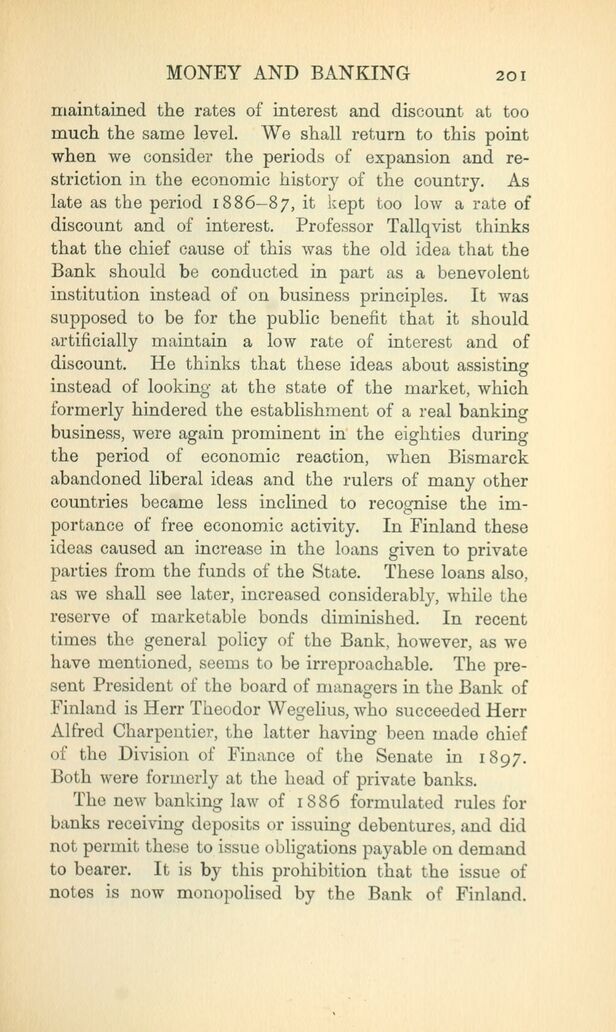
Full resolution (JPEG) - On this page / på denna sida - VIII. Money and Banking

<< prev. page << föreg. sida << >> nästa sida >> next page >>
Below is the raw OCR text
from the above scanned image.
Do you see an error? Proofread the page now!
Här nedan syns maskintolkade texten från faksimilbilden ovan.
Ser du något fel? Korrekturläs sidan nu!
This page has been proofread at least once.
(diff)
(history)
Denna sida har korrekturlästs minst en gång.
(skillnad)
(historik)
maintained the rates of interest and discount at too
much the same level. We shall return to this point
when we consider the periods of expansion and
restriction in the economic history of the country. As
late as the period 1886-87, it kept too low a rate of
discount and of interest. Professor Tallqvist thinks
that the chief cause of this was the old idea that the
Bank should be conducted in part as a benevolent
institution instead of on business principles. It was
supposed to be for the public benefit that it should
artificially maintain a low rate of interest and of
discount. He thinks that these ideas about assisting
instead of looking at the state of the market, which
formerly hindered the establishment of a real banking
business, were again prominent in the eighties during
the period of economic reaction, when Bismarck
abandoned liberal ideas and the rulers of many other
countries became less inclined to recognise the
importance of free economic activity. In Finland these
ideas caused an increase in the loans given to private
parties from the funds of the State. These loans also,
as we shall see later, increased considerably, while the
reserve of marketable bonds diminished. In recent
times the general policy of the Bank, however, as we
have mentioned, seems to be irreproachable. The
present President of the board of managers in the Bank of
Finland is Herr Theodor Wegelius, who succeeded Herr
Alfred Charpentier, the latter having been made chief
of the Division of Finance of the Senate in 1897.
Both were formerly at the head of private banks.
The new banking law of 1886 formulated rules for
banks receiving deposits or issuing debentures, and did
not permit these to issue obligations payable on demand
to bearer. It is by this prohibition that the issue of
notes is now monopolised by the Bank of Finland.
<< prev. page << föreg. sida << >> nästa sida >> next page >>